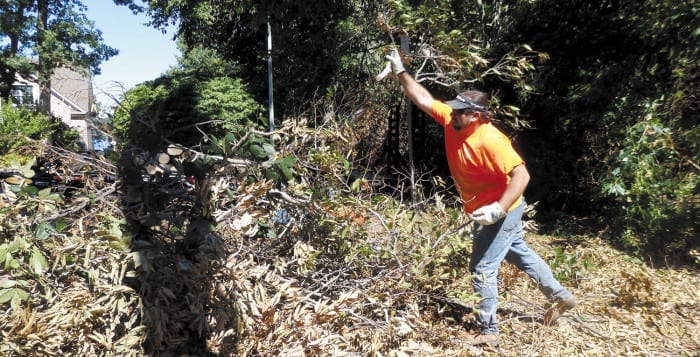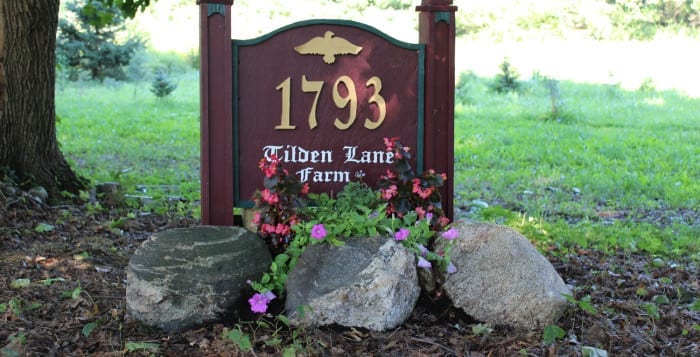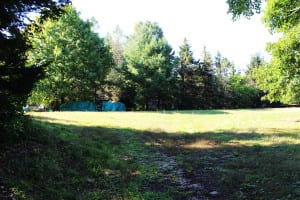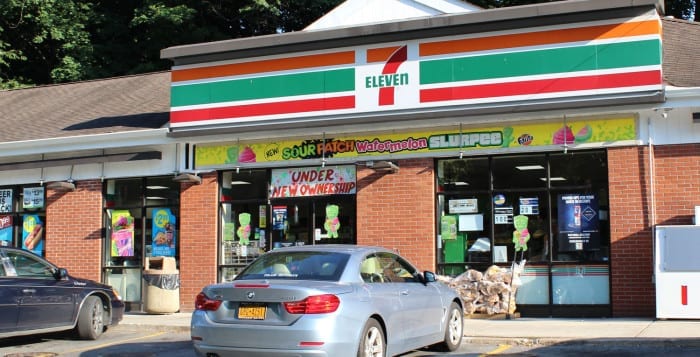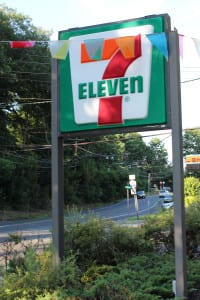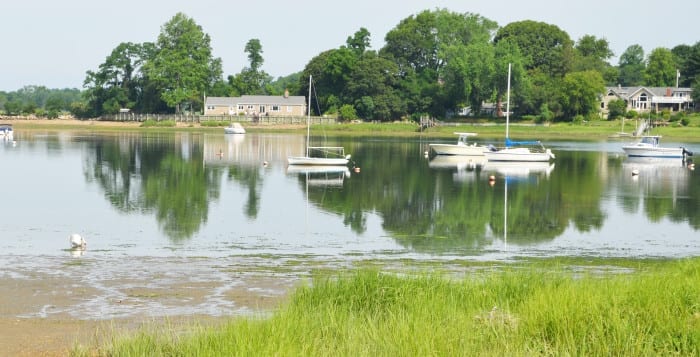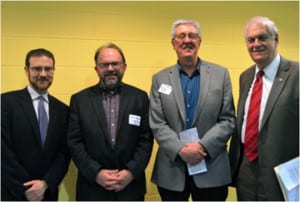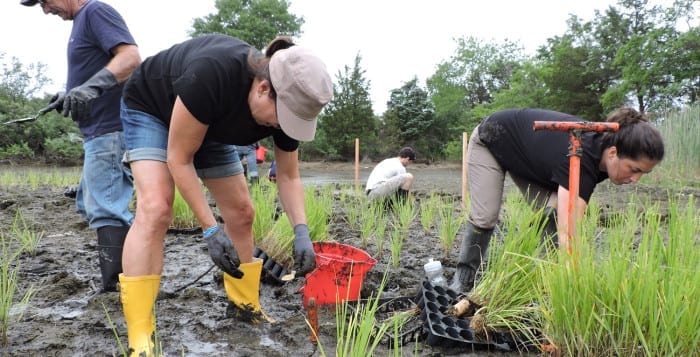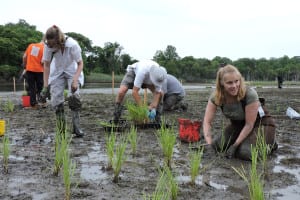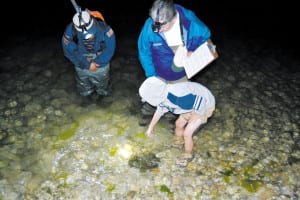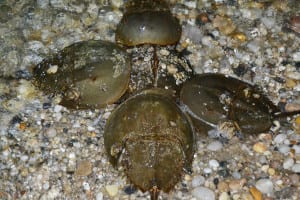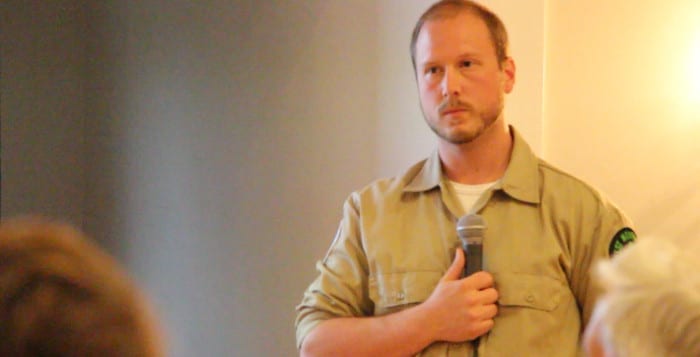In the aftermath of the powerful early-morning storm that hit the North Shore on Aug. 4, organizations and volunteers, like Impact Environmental and Ward Melville High School ice hockey students, are battling fallen trees and branches as they cleanup areas like Trustees Park in Poquott.
The volunteers began cutting trees, picking up debris and clearing areas of the park around 9 a.m. on Friday. Few people have used the park for recreational purposes since the storm, as broken trees, branches and other debris still blocked the park’s main entrance. Nick Pisano, a Ward Melville High School student, said he “doubts that [they] could finish [cleaning] today.”
Impact environmental worker Frank DeVivo agreed with Pisano.
“There’s a lot in there and we have several people [helping clear the debris], so we’ll be able to get it done,” DeVivo said. “It’s just a matter of time and organization.”
Two weeks ago, on Aug. 13, Poquott residents voiced their concerns regarding how storm-damaged areas of the village were being cleared following the storm. But clearing those areas, including the park, was difficult. Clearing the park alone cost Impact Environmental around $8,000.
“The village has no money to do any of the prep work,” Richard Parrish, president and CEO of Impact Environmental said. “So we made a decision that Impact Environmental would pay [to clear the park].” This is something we do to help out the village,” Parrish said.
Earlier Friday, the debris extended several feet in front of the park’s entrance. According to Impact Environmental worker John Morgan, the volunteers started their day fighting to clear branches and twigs to clear the area in front of the entrance. Morgan also said he helped clear an additional path by the entrance. With the path cleared, Morgan and the other volunteers could continue picking up debris, including pieces of a 30 to 35 foot birch tree that broke off during the storm.
Morgan cut the broken tree into several pieces, making it easier to clear the main entrance area. Morgan, like Parrish and the other volunteers, was happy to help the community, saying that making others happy made him happy. DeVivo had a similar response regarding clearing the park’s entranceway.
“This is a really well-used park, and they enjoy the ability to get to their tennis courts, and they enjoy the ability to take nice walks,” DeVivo said. “So it’s good to be able to come out here and help out, and help clean it up and get it back to functionality.”
Mayor Delores Parrish also joined the volunteers, later in the day, to help clean and move trees and other debris from the park. According to Richard Parrish, the mayor was bringing a larger vehicle to help transport debris to a landfill.

